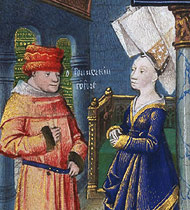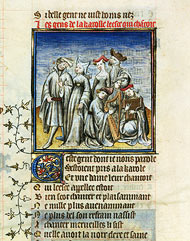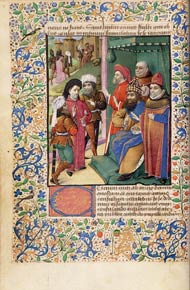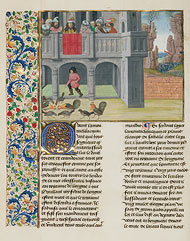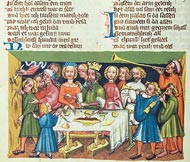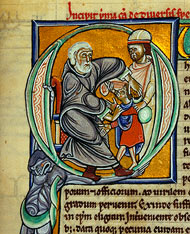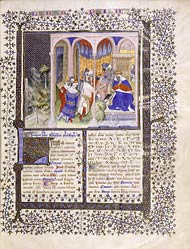| Education | ||
| Exhibitions | ||
| Explore Art | ||
| Research and Conservation | ||
| Bookstore | ||
| Games | ||
| About the J. Paul Getty Museum | ||
| Public Programs | ||
| Museum Home
|
January 24–April 9, 2006 at the Getty Center
Bibles and prayer books were not the only books produced in Europe during the Middle Ages (about 500–1500 A.D.). This exhibition showcases examples of the vast array of lavishly illustrated nonreligious manuscripts that were also produced during this time. |
||||||||||||||||||||
Entertainment and Instruction The late Middle Ages saw a proliferation of illustrated books for the entertainment and instruction of the upper classes. Lavish paintings in the books helped readers visualize the stories. |
||||||||||||||||||||
At right, a man in a magenta robe argues his case before the Holy Roman Emperor on a page from Historia de Duobus Amantibus (The Story of Two Lovers), a manuscript containing copies of letters written by Eneas Silvius Piccolomini (later Pope Pius II) describing the dangers of life at court. |
||||||||||||||||||||
History People of the Middle Ages sought to understand their world by looking to the past. Most religious books were written in Latin, the language of the Church, but history manuscripts were often written in the vernacular, the language native to a region, such as French or German. |
||||||||||||||||||||
King Belshazzar celebrates the looting of the Temple at Jerusalem in this miniature from Rudolf von Ems's World Chronicle. A disembodied hand writes a cryptic message on the wall predicting that the king will die for his act of sacrilege.
|
||||||||||||||||||||
Science, Law, and Philosophy Students flocked to universities in the 12th and 13th centuries to study law, medicine, theology, and the liberal arts. This stimulated the market for texts on these subjects. Upper-class patrons also commissioned expensive copies of academic texts. |
||||||||||||||||||||
The philosopher Alchandreus wrote about the movement of the planets, the signs of the zodiac, and the art of predicting the future. In the image at right we see him kneeling to present a book to a king in a lavish reception hall, surrounded by scholars. |
||||||||||||||||||||
